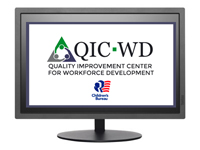Child Welfare Quality Improvement Center for Workforce Development (QIC-WD)
Date of this Version
12-7-2020
Document Type
Article
Abstract
Many employees working in social services are exposed to workplace violence (described in Andersen, et al., 2018) and bullying (discussed in Whitaker, 2012). The workplace violence paper showed not only that up to three-fourths of social workers are exposed to violence at work, but that organizational structures and dynamics set the stage for violence to occur. Settings where staff lacked role clarity and predictability, and where emotional demands, role conflict, and work family conflict were high, also were associated with more threats and violence among employees and by clients. These findings, in addition to studies on bullying, seem to point to a need for changes in organizational culture and climate to lower the incidence of both problems. Another challenge facing the workforce is sexual harassment, however, few studies have examined sexual harassment in social work and the ones that do focus mostly on students. One study in Ireland (O’Reilly and Garrett, 2019) found that most female social workers had experienced sexual harassment on the job. While the study of the effects of interacting with traumatized clients and managing staff trauma histories, mental health issues, and secondary trauma is increasing, more attention needs to be paid to the other workplace hazards (e.g., bullying, violence, and sexual harassment) that could exacerbate secondary trauma and exits from the child welfare workforce. The QIC-WD needs assessment process did not specifically ask about workplace violence, bullying or harassment in our sites. Yet some of our sites are working to address primary and secondary traumatic stress and organizational culture, all of which could impact negative workplace behaviors. In our research, we are exploring how people behave and if that differs from more normal operations. One of our research questions is how staff behave towards colleagues during challenging workforce events to better understand how that impacts overall organizational culture and climate, morale, interpersonal relationships and work with families.
Included in
Industrial and Organizational Psychology Commons, Performance Management Commons, Public Policy Commons, Social Welfare Commons, Social Work Commons, Training and Development Commons

